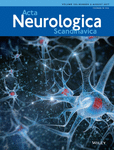Triptan use in Australia 1997-2015: A pharmacoepidemiological study
Abstract
Objective
This study examined the use of triptan derivatives in Australia between 1997 and 2015, based on a national drug reimbursement database, and compared patterns of use with available international data.
Methods
We obtained publically available data on the number of prescriptions for triptans marketed in Australia (sumatriptan, eletriptan, rizatriptan, zolmitriptan, naratriptan). Dispensed use was measured as defined daily dose (DDD per 1000 population per day) for Australia's concessional beneficiaries (low-income earners, people with disabilities, and seniors).
Results
Total triptan use increased at an average annual rate of 112% over the 18-year period. Sumatriptan was the preferred triptan throughout (average annual increase 45%). Zolmitriptan and naratriptan use peaked in 2004, then decreased. Rizatriptan and eletriptan became available in 2010. There were 3.2-fold and 5.9-fold annual increases in their use from 2011 to 2105. There was some evidence suggesting that pattern of triptan use in concessional beneficiaries probably reflected pattern of overall triptan use in Australia.
Conclusions
The use of triptan derivatives in Australia per head of population for treating migraine attacks continued to increase over the 18-year period studied, with use of recently introduced derivatives more than substituting for decreased use of older triptans. This suggests that the available treatments of migraine attacks had achieved what were considered less than adequate therapeutic outcomes.




